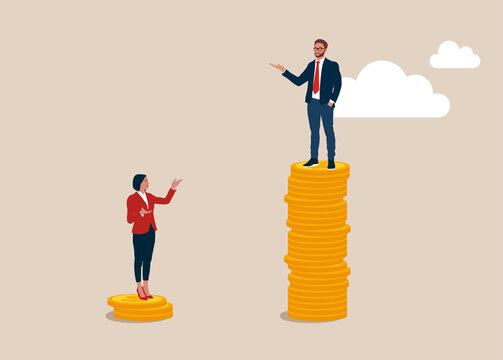News Highlight
The third International Equal Pay Day has been observed recently. It is a United Nations-recognized event that falls on September 18.
Key Takeaway
- Although there has been a corresponding improvement in India’s labour market outcomes, wage inequalities still prevail there.
What is the gender wage gap?
- The Gender Pay Parity, also known as the Gender Pay Gap or gender wage gap, is the average difference between the remuneration of working men and working women.
Data
- Global Gender Gap Report 2022:
- The Global Gender Gap Report 2021 by the World Economic Forum (WEF).
- India is ranked 135th out of 146 nations in the world.
- The National Sample Survey Office (NSSO):
- Despite notable progress in closing the gender pay gap over time in India, the gap remains high by international standards. Indian women earned, on average, 48% less compared to their male counterparts in 1993-94.
- Since then, the gap declined to 28% in 2018-19, as shown in the labour force survey data of the National Sample Survey Office (NSSO).
Reason for Gender wage gap in India
- Discrimination in Job Opportunities:
- While individual characteristics such as education, skills, or experience explain part of the gender pay gap, a large part of the gender pay gap can still be attributed purely to discrimination based on one’s gender or sex.
- Informal Sector:
- women’s participation is higher in informal sectors, such as agriculture, where wages are usually lower.
- Bypassing Laws:
- Many job providers pay less to compensate for maternity benefits, women’s security expenditure, etc.
- Poor Access to Capital:
- Women just hold 2% of total assets in India. This compels them to wage employment with lower wages despite being an entrepreneur.
- Poor Grievance Redressal System:
- There is a poor grievance redressal system for complaints against wage discrimination. This fails to create a deterrent among employers.
- Poor health and education:
- Poor health and education lead to poor productivity and lower wages.
- COVID Pandemic:
- The International Labour Organisation’s “Global Wage Report 2020–21” suggests the pandemic inflicted massive downward pressure on wages and disproportionately affected women’s total wages compared to men’s.
Government Initiatives
- The Minimum Wage Act of 1948:
- The Minimum Wages Act of 1948 is an Act of Parliament concerning Indian labour law that sets the minimum wages that must be paid to skilled and unskilled labourers.
- The Equal Remuneration Act in 1976:
- It is an Act to provide for the payment of equal remuneration to male and female workers and for the prevention of discrimination.
- The Amended Maternity Benefit Act of 1961:
- In 2017, the government amended the Maternity Benefit Act of 1961, which increased the “maternity leave with pay protection’ from 12 weeks to 26 weeks for all women working in establishments employing ten or more workers.
- The Skill India Mission:
- The scheme was launched to make Indian youth belonging to rural and urban areas competent for employment.
- National Mission for Women’s Empowerment:
- It is to strengthen the overall processes that promote the all-around development of women.
International initiatives
- SDG 8:
- One of the targets of the UN Sustainable Development Goal 8 is “achieving full and productive employment and decent work for all women and men, including for young people and persons with disabilities and equal pay for work of equal value” by 2030.
- The Equal Pay International Coalition:
- The Equal Pay International Coalition (EPIC) was launched in 2017 as a multistakeholder initiative led by the International Labour Organisation (ILO), UN Women and the Organisation for Economic Cooperation and Development (OECD) that seeks to achieve equal pay for women and men everywhere.
- The International Equal Pay Day:
- The International Equal Pay Day, celebrated on 18 September, represents the longstanding efforts towards the achievement of equal pay for work of equal value.
Way Forward:
- Compulsory higher education:
- Compulsory higher education like primary education for women would help to improve their efficiency and get lucrative jobs.
- Challenging Social Attitude:
- The attitudinal issue associated with patriarchy can only be tackled with the socialisation process in which education and propagation of women’s achievements play a significant role.
- For example, Several successful women corporate leaders like Ela Bhatt, Indira Nooyi, Arundhati Roy, etc. have repeatedly proved the naysayers wrong when it comes to proving the mettle of women-power.
- Give adequate importance to women organisations:
- Push to Self Help Groups (SHGs), women entrepreneurship, financial and digital literacy among females, etc., to give them decision-making power and work towards women empowerment.
- Economic independence:
- Increasing women’s economic independence through improving financial literacy, access to financial services and assisting women in developing their employment prospects is essential.
- Skilling:
- Skill development through life skills education for low-income women equipping them with knowledge, skills and an understanding of their rights and entitlements, enabling them to manage their lives better.
- Tax incentives:
- Provide tax incentives to private organisations which reserve employment for women.
Content Source: The Hindu



